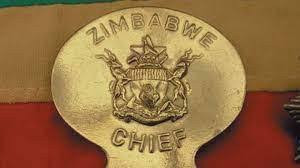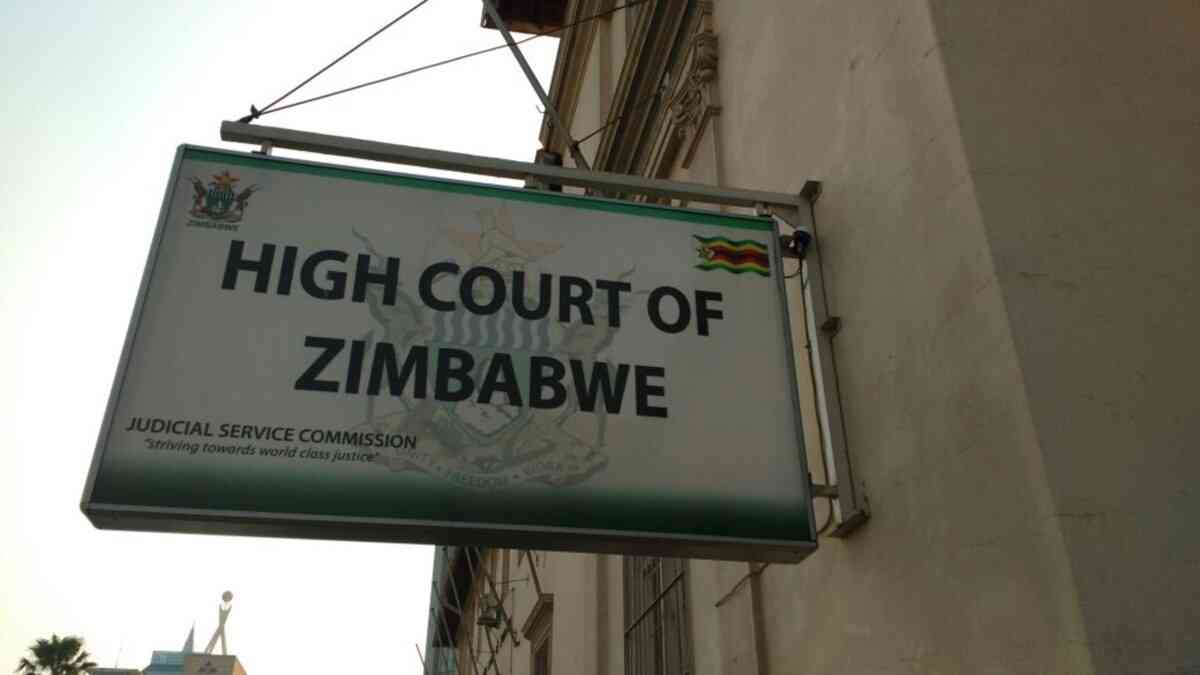
MATOBO — Shrivelled hides and an odd pair of horns perched on an empty granary are a stark reminder of the thin cattle Gibson Dube lost in the 2012 drought which stripped pastures bare in much of southern Zimbabwe.
BUSANI BAFANA OWN CORRESPONDENT
Spreading his 10 fingers, Dube (78) indicates the total number of cattle that he lost. The drought turned grazing areas into dust bowls and dried available sources to water for livestock — the agriculture mainstay for many farmers here.
But not again.
Dube and other livestock farmers in the Matobo district in Matabeleland South province are dealing with the impact of drought, hopefully for good. They have built feedlots where animals are fed inside pens since 2013.
Pen feeding involves the use of commercial stockfeed.
It is a positive spin-off from a government initiative involving the Food and Agriculture Organisation (FAO) in 2012 to provide “survival feed” to farmers during the height of the drought which led to the region many times being declared a disaster area in the past.
- Chamisa under fire over US$120K donation
- Mavhunga puts DeMbare into Chibuku quarterfinals
- Pension funds bet on Cabora Bassa oilfields
- Councils defy govt fire tender directive
Keep Reading
Matobo is a drought-prone district in Matabeleland South province which receives patchy rainfall, hardly 450mm in every four out of five seasons.
In this region, there is limited cropping of drought-tolerant grains like sorghum and millet with livestock production the most viable and dominant agriculture activity, given sweet veld across the district.
“I have put two of my beasts into a feeding pen and hope to put more as I improve my animals and initial signs are pleasing because I can tell that the animals have changed,” says Dube, a member of the Makupa feedlot.
Another farmer involved in the Makupa feedlot, Bekezela Sibanda (60) — who has been in livestock farming for the past 15 years — hopes to use the money she will earn from selling her fattened ox to improve her dairy herd.
“The biggest challenge for farmers in this region has been water and pastures, but this concept is solving that problem and has other added benefits in that farmers are able to monitor the progress of their cattle up to the time they are ready for sale,” Sibanda says.
Taking a cue from the FAO subsidised feeds, farmers have pooled money together to buy commercial livestock feed from the National Foods, though more pricey.
The government through the Livestock Production and Development (LPD) sold subsidised feed during the epicentre of the drought.
In the last two months, farmers have established and run five feedlots through the Matobo District Livestock Development Committee (MDLDC) established in 2013. In the first three feedlots there are currently 150 animals.
The project is a novel way to improve livestock through a regime of monitored feeding and health checks.
While farmers have adopted the concept to save their cattle, they have also been able to improve the quality of the animals to fetch higher prices on the market and circumvent middlemen who for years have been buying cattle at giveaway prices, but reaping super profits.
Farmers in one of the pilot projects known as Hobodo in the Mangwe district have been able to sell cattle at prices of $900 a beast or more, quadruple the $200 they fetched during the dry months when most livestock were thin.
Now they no longer wait for the rains to improve the pastures because they can pen feed throughout the year.
Livestock farmers are already looking into the future for better returns from using the feedlot concept.
Farmer Simephi Dube (57) posed majestically with one of the animals she put in the newly-opened Makupa feedlot, developed by local farmers to buffer animals from the frequent droughts that hit southern Zimbabwe.
With proceeds from the pen feeding project, Dube is considering buying more cattle to increase her herd and install a water pump for a planned irrigation project in her village.
An LPD report shows that Zimbabwe’s Matabeleland South province last year lost more than 9 000 cattle as a result of the drought.
This is a conservative figure of only reported animal deaths as some went unreported. The FAO intervention with survival feeding did not help the situation as it arrived late.
Weather extremes and problems such as poor crop yields related to climate change have forced farmers in Zimbabwe to find innovative ways to survive in a region where livestock farming is a primary source of livelihood.
According to the 2012-2013 Livestock Drought Mitigation Report compiled by the LPD, Zimbabwe’s cattle herd is at 5,2 million, but the amount of cattle available for slaughter known as the offtake rate, is now at 3,45% down from 5% in 2010.
With 556 619 cattle in Matabeleland South province, Matobo district alone recorded 1 232 cattle deaths, the second-highest after Mangwe district which lost 5 476 cattle.
Arguably this large number in Mangwe is comprised largely of cattle from Matobo district because of limited grazing.
“Matabeleland South recorded 9 300 cattle deaths in the past year, but this district has to date not recorded any poverty deaths due to this innovation by the farmers,” Simangaliphi Ngwabi, chief livestock production and development officer for Matabeleland South Province, said at the official opening of the Bakwayi feedlot in Matobo last month.
“Climate change is here to stay and farmers have to be creative to move away from selling sickly animals to adding value to them. This project in Bakwayi is an example for other communities in Matobo district.”
A farmer in Maphisa, Edson Moyo, heard about pen feeding and quickly adopted the idea by joining the Hadlane Feedlot which opened in September this year. Together with his father they put a herd of 25 cattle in the feedlot.
Developer of the feedlot concept, Dr Ronny Sibanda — a FAO consultant — says the projects were initially developed to help farmers improve their animals, but have evolved into a business venture.
Farmers are realising economic returns from better quality and quantity of animals as a result of the confined feeding and monitoring. Besides, the concept is also helping address other challenges besetting livestock farmers such as disease outbreaks and livestock theft.
“The provision of a fund for the sale of feed has gone a long way in helping farmers improve the quality of their animals,” Dr Sibanda says adding that, “This is an opportunity for farmers in Matobo to be self reliant.”
Matabeleland South Provincial Affairs minister Abedinico Ncube, who officiated at the launch of the Bakwayi pen feeding project said the concept was a hand-up for farmers who should stop relying on handouts.
“That is why buyers should not cheat the people by paying poor prices when farmers will have invested in the inputs to improve their cattle through pen feeding,” said Ncube.
Chairman of the MDLDC management committee, comprising 68 dip tanks in Matobo district, Khumbula Dube, says the feedlot concept was embraced by local farmers after they suffered huge animal losses in 2012 as a result of the drought.
MDLDC’s development plan seeks to make Matobo district proactive by instituting a resilient system to adapt to a changing environment.
The plan focuses on strengthening livestock production through enhanced capacity development based on experiential learning.
In order to intensify livestock production in the district particularly in the wake of a changing climate, there is need for investment in proper infrastructure, feed, breeds, animal health, marketing, management, livestock identification and traceability.
Under the Emergency Livestock Drought Mitigation programme, FAO contracted SNV as the implementing partner in the project. In turn, SNV contracted Livestock Zone — a private entity — as the local capacity builder.
As the Emergency Livestock Drought Mitigation programme was drawing to an end, Livestock Zone was transformed from a local capacity builder to implement the MDLDC plan.
The local capacity builder concept is an SNV model that seeks to boost capacity in local communities, long after the funded component of the project has ended.
The Emergency Livestock Drought Mitigation Project led to the establishment of a Matobo Livestock Revolving Fund (MLRF) which provides resources to strengthen livestock production against adverse climatic conditions, support the sustenance and profitability of farming enterprises in Matobo district.
“We have developed revenue streams to satisfy the concept of a revolving fund based on the MDLDC plan,” says Muhle Masuku from Livestock Zone which helped open a stock feed warehouse in Maphisa for all livestock species and developed five feedlots.
“The MDLDC makes money from selling the feed to the public and feedlots and the proceeds are ploughed back into the revolving fund, thereby ensuring the sustainability of the community project,” Masuku says.
The government of Zimbabwe, keen to restore the country’s beef basket status, has prioritised the livestock sector, allocating a specific deputy minister for livestock in the new Cabinet announced after the July 2013 national elections.
As the source of most of the country’s beef, Matabeleland province could help unlock new economic value for livestock farmers.
This is dependent on some of the production challenges including disease surveillance and control, poor quality and low off take of animals being addressed.
The European Union — once a market for an annual export quota of 9 100 tonnes of Zimbabwean beef until 2001 — has indicated it is keen to explore export opportunities should the country address zoonoses like foot and mouth.
Zoonoses are diseases acquired from or transmitted between animals and people.
For farmers like Gibson Dube, the drought is no longer an excuse not to prosper from livestock production.














